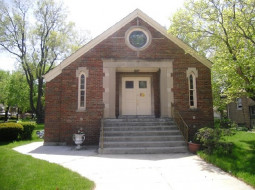<<< back< prevnext >

Article:
Why Census Numbers Matter for Church Appraisals

One of the most common errors we see in Religious Property appraisals is the lack of church appraiser inquiry about the census history of the congregation. For a lending institution, however, this can be one of the most critical factors. Census levels can reflect demand for the services that churches provide. If the demand is dropping it could be a predictor that the value of the property might also be in jeopardy and a religious property appraiser should be aware of it.
Church attendance in the United States has been in a slow state of decline for decades. In 1990 about 20.4% of American adults attended church regularly (defined as attending 3 in 8 services). By 2005 that average was 17.5%. By 2020 The American Church Research Project projects regular attendance levels of only 14.7%.
The biggest religious property appraisal factor from a macro level to predict future church growth or shrinkage is the population growth in that area. If the population levels are stable (as in most of Cook County Illinois, for example) then a slow decline could be anticipated by a religious property appraiser. If the subject area of your religious facility appraisal is losing population then you could expect declines. A growing population can neutralize or counteract the overall decline in church attendance.
Congregations must continually fight for new members. In any given year a church can expect to lose from 6-10% of its population due to lack of interest, health reasons or moving out of the area. To counteract these declines a church should have about 5% of weekly attendance be first timers. To generate slight growth the congregation would need to get about 14-16% of those first timers to join. A fast growing church might get about 25% of those first timers to join in a year. If only 5-8% of first timers are joining then you would generally have a declining population.
While census levels can often vary from year to year, they can reveal important long term trends. Slow declines are frequently evident in today's congregations. Steep declines, however, could reflect some very serious issues that might require further inquiry by the religious property appraiser.
We would be the first to acknowledge that accurate census information is not always easy to get, particularly for smaller churches. When it is available, however, it can provide critical information to the religious property appraiser and lender.
Church attendance in the United States has been in a slow state of decline for decades. In 1990 about 20.4% of American adults attended church regularly (defined as attending 3 in 8 services). By 2005 that average was 17.5%. By 2020 The American Church Research Project projects regular attendance levels of only 14.7%.
The biggest religious property appraisal factor from a macro level to predict future church growth or shrinkage is the population growth in that area. If the population levels are stable (as in most of Cook County Illinois, for example) then a slow decline could be anticipated by a religious property appraiser. If the subject area of your religious facility appraisal is losing population then you could expect declines. A growing population can neutralize or counteract the overall decline in church attendance.
Congregations must continually fight for new members. In any given year a church can expect to lose from 6-10% of its population due to lack of interest, health reasons or moving out of the area. To counteract these declines a church should have about 5% of weekly attendance be first timers. To generate slight growth the congregation would need to get about 14-16% of those first timers to join. A fast growing church might get about 25% of those first timers to join in a year. If only 5-8% of first timers are joining then you would generally have a declining population.
While census levels can often vary from year to year, they can reveal important long term trends. Slow declines are frequently evident in today's congregations. Steep declines, however, could reflect some very serious issues that might require further inquiry by the religious property appraiser.
We would be the first to acknowledge that accurate census information is not always easy to get, particularly for smaller churches. When it is available, however, it can provide critical information to the religious property appraiser and lender.



